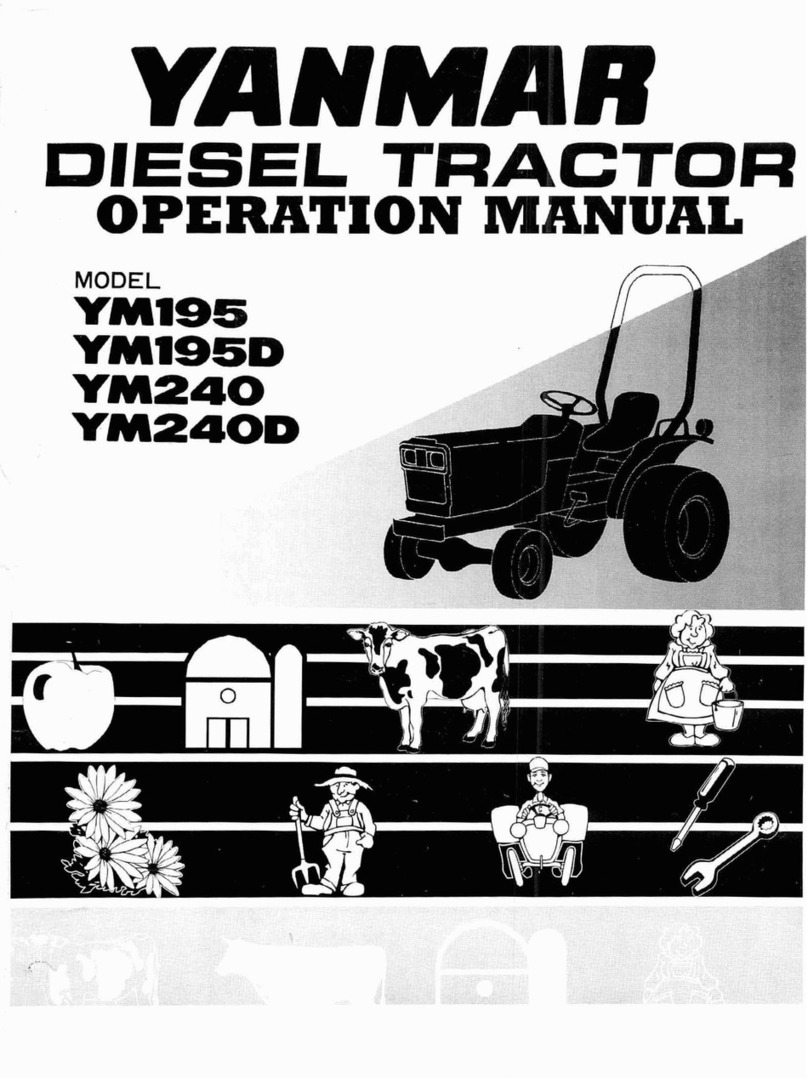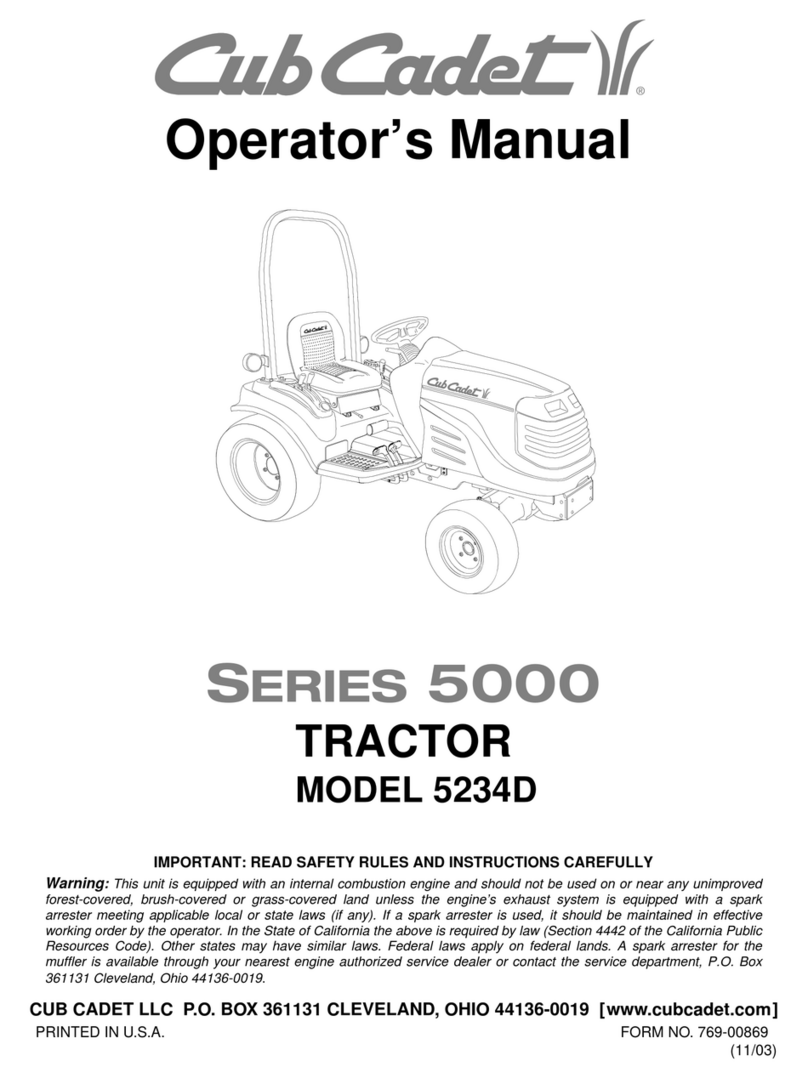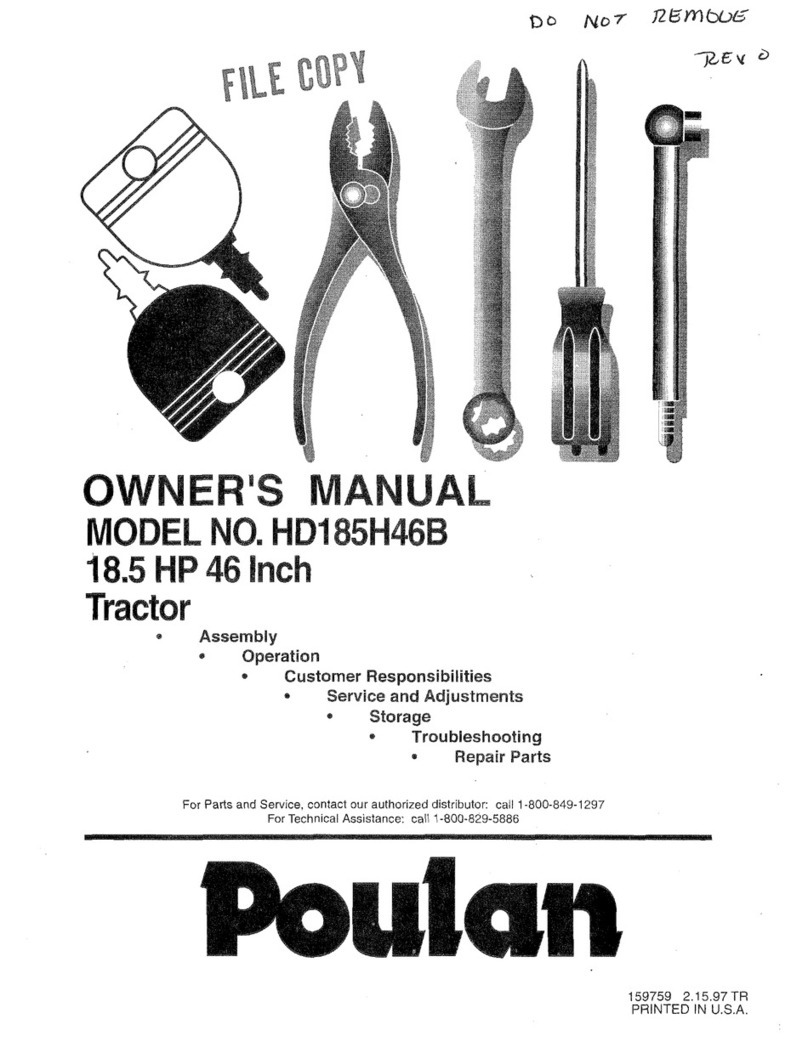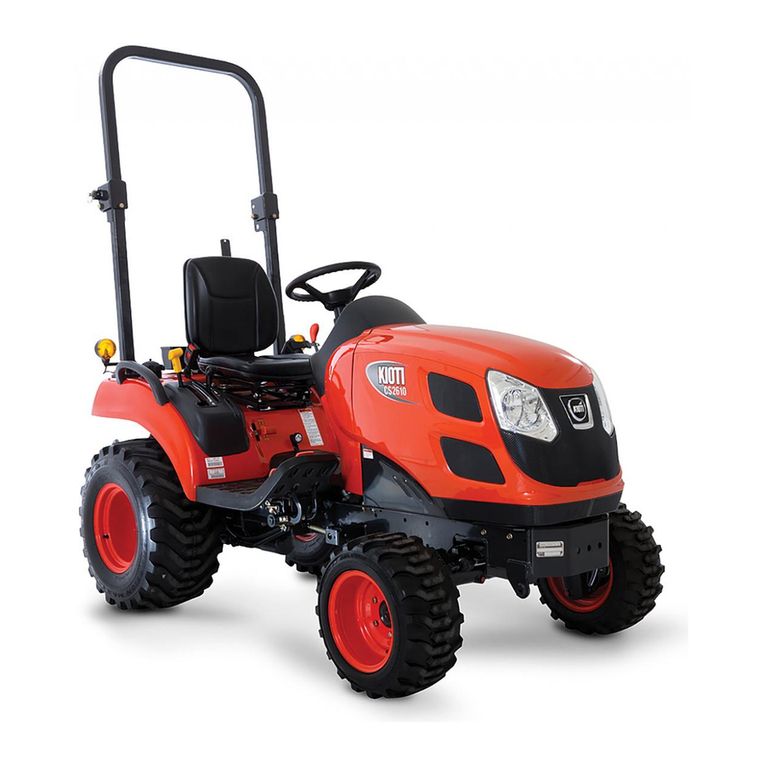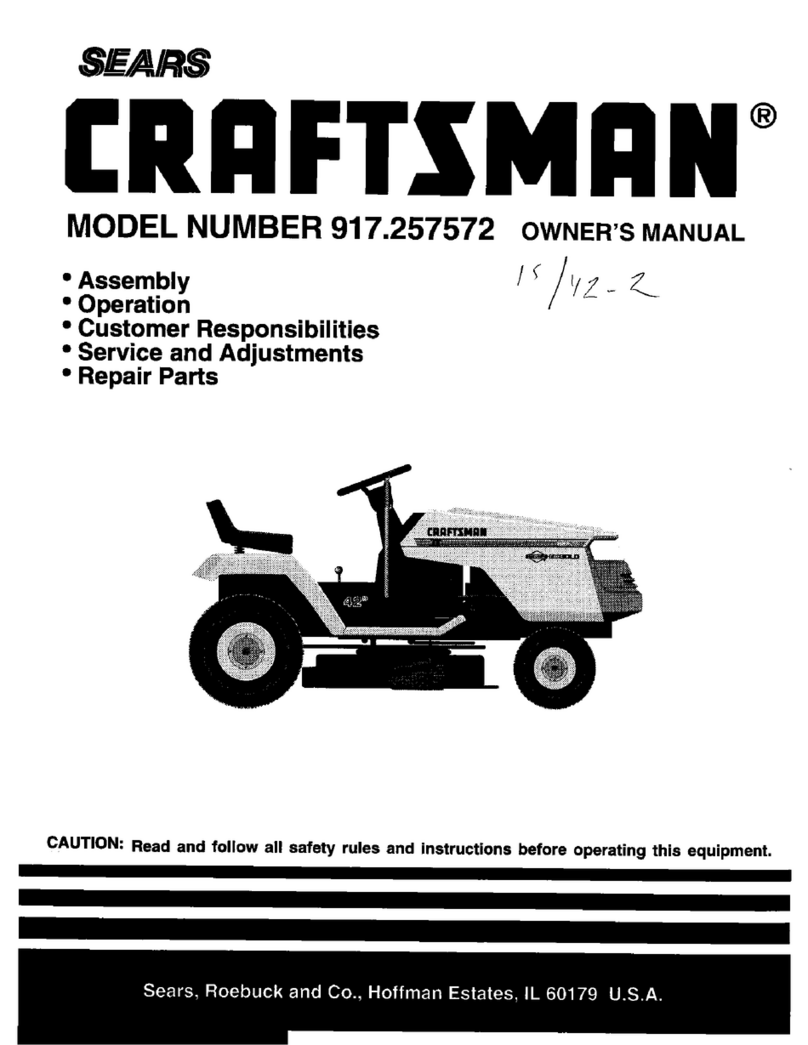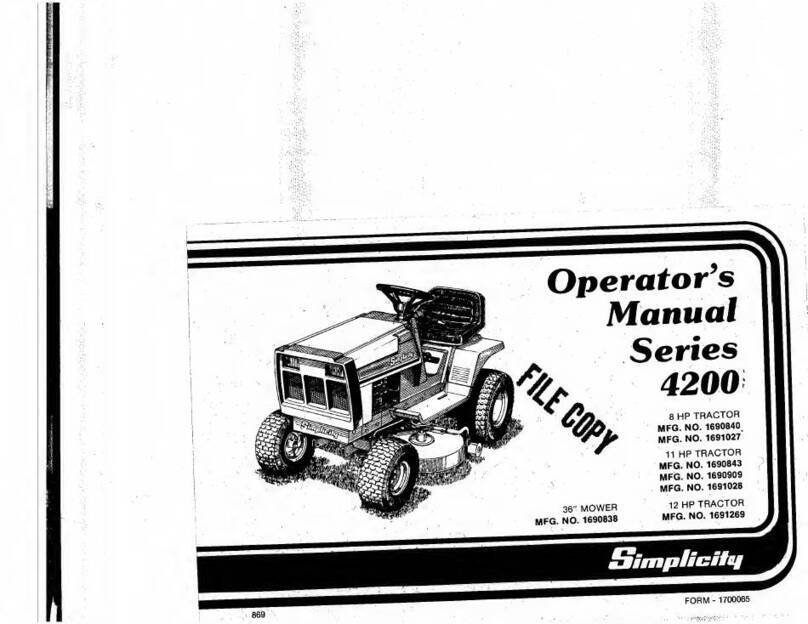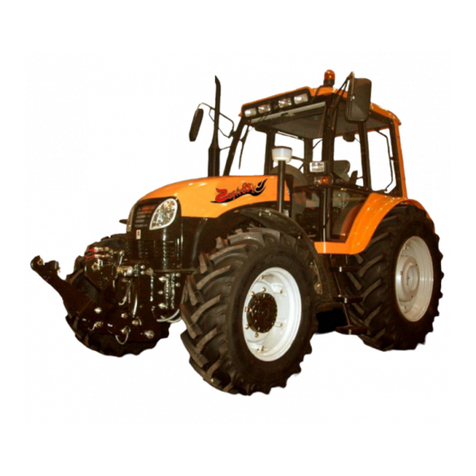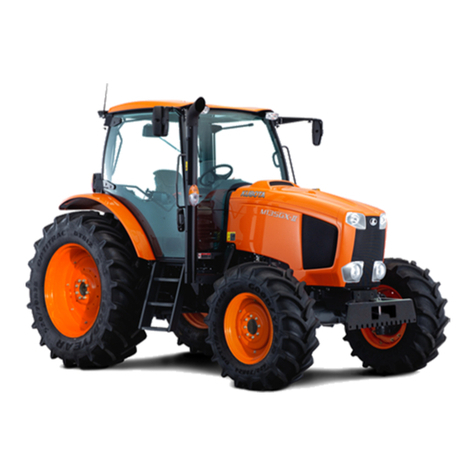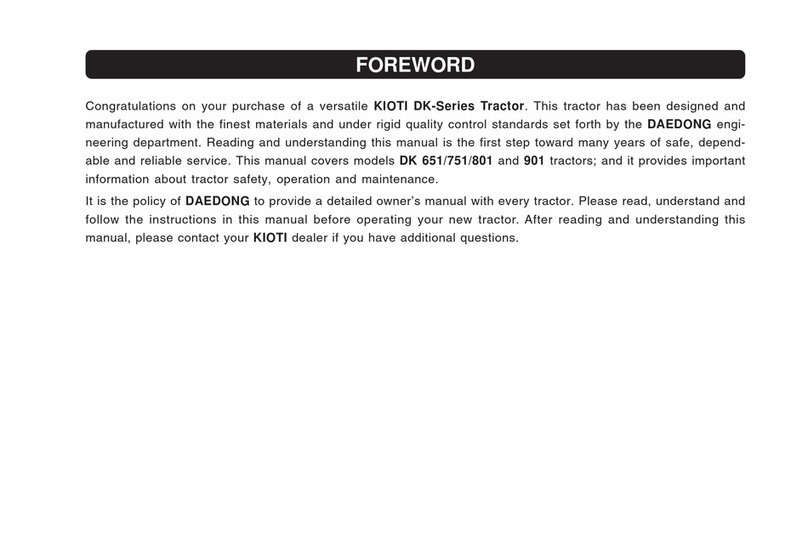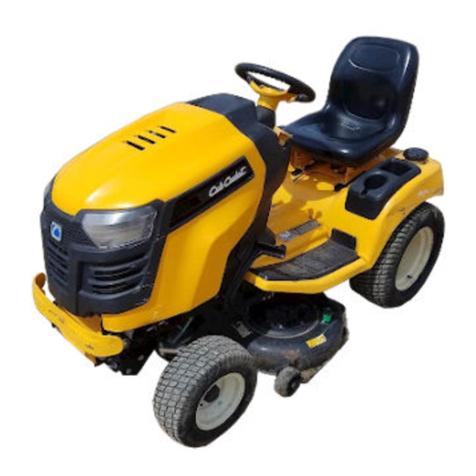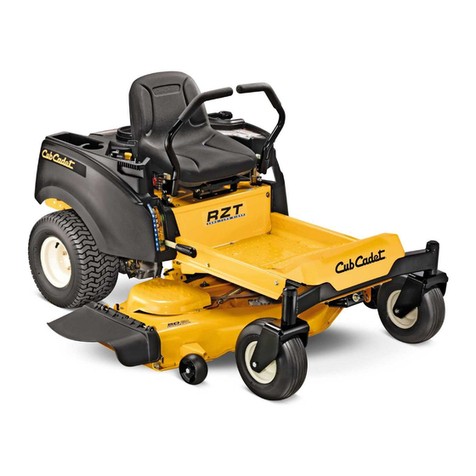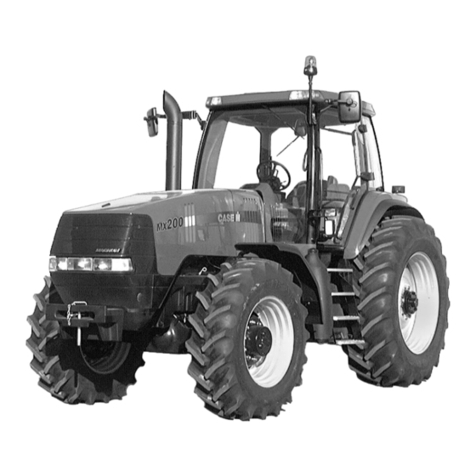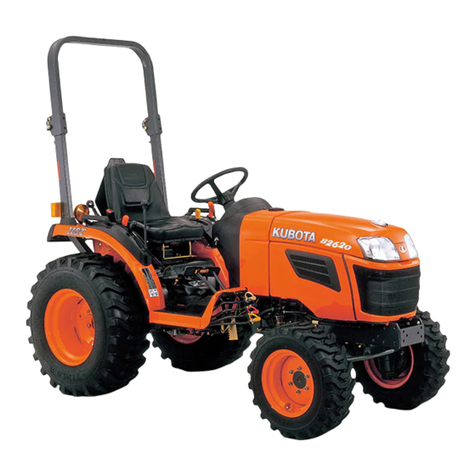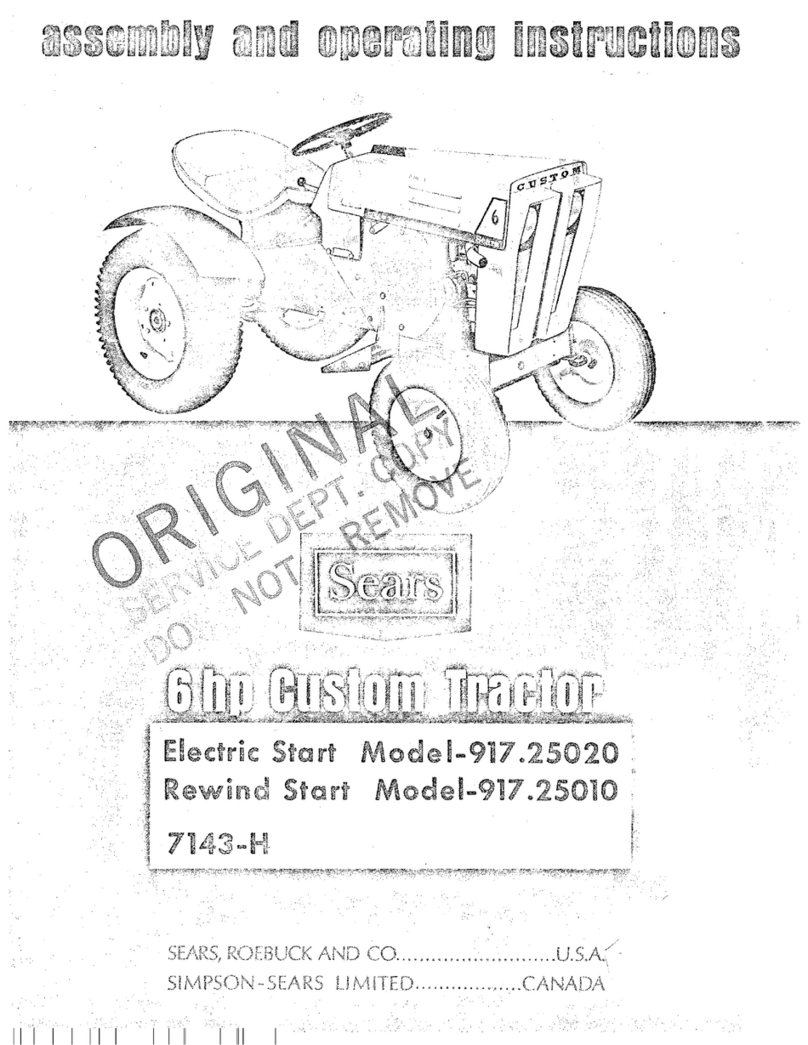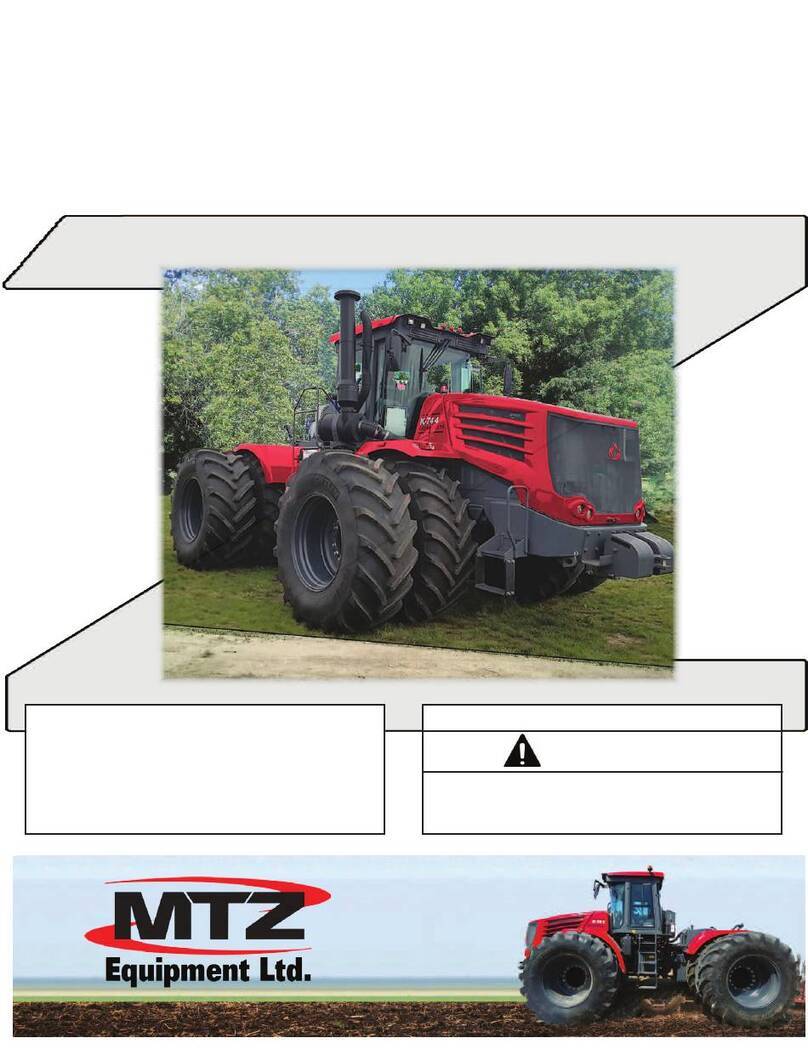Avantco Robot 185 User manual

English
Operator’s Manual 2013-
ROBOT 185
Please read this manual carefully before using the equipment, and follow all instructions.
Keep this manual for later reference.

2
Robot 185
Table of contents
FOREWORD..................................................4
WARRANTY LIABILITY............................................5
Warning.........................................................5
SAFETY INSTRUCTIONS........................................6
General............................................................6
Work environment................................................6
Personal protective equipment.............................6
Risk factors............................................................6
Stability............................................................6
Warning labels.......................................................7
Electrical safety......................................................7
Transport and shifting............................................7
Before operation...................................................8
During operation...................................................8
After operation.....................................................9
To be noted in service and maintenance operations...9
STRUCTURE................................................10
General............................................................10
Technical specifications........................................10
Structure and terms............................................12
Electric system....................................................13
Electric cabinet, heavy current............................14
Electric cabinet, low current................................15
Hydraulic system, the frame................................16
Hydraulic system, the tower................................17
Control valve of the arm system.........................18
Control valve of the frame...................................18
Control system....................................................19
Symbols of switches and indicator lights..............20
Lever symbols.....................................................21
Remote control specifications.............................22
OPERATION.........................................................23
General instructions............................................23
Inspection before operation.............................23
Safety.................................................................23
Lifting and transportation....................................24
Start up and shut down........................................25
Driving............................................................26
Boom usage...................................................27
Auxiliary attachment (Option)............................28
Parallel drive, excavation function (Parallel).........28
Hold function......................................................28
Work lights (Light)..............................................29
Crawling mode (Slow).........................................29
Adjustmentandcalibrationofthecontrolsystem...29
Changing radio channels......................................30
Taking into use a new remote control.................30
Alert signal...........................................................31
Charging the battery............................................31
Operating and changing attachment....................32
Pressure adjustment of attachments...............32
Installing attachments......................................32
Removal of attachments..................................32
Operating the machine in difficult conditions.......33
High temperature............................................33
Low temperature............................................33
Water..........................................................33
Danger of fire and explosion............................33
SERVICE.................................................................34
General................................................................34
Service plan.........................................................34
The operating hour meter of the motor/hydraulic pump...
.34
Service plan..........................................................35
Lubrication........................................................36
Lubrication of the cylinders and outriggers......36
Lubricating the slewing bearing.......................36
Control system....................................................37
Checking the control cable..............................37
Electric system....................................................38
General..........................................................38
Standard values for the fuse size
and the extension cord (50 Hz)......................38
Checking the extension cord...........................39
Checking the supply cable................................40
Hydraulic system.................................................41
General.........................................................41
Preventing failures...........................................41
Determining the hydraulic pressure................42
Adjusting the hydraulic pressure....................43
Checking the cylinders.....................................43
Boom system...................................................44
Installing hydraulic hoses and connectors.......45
Torque method................................................45
Tightening by hand, the FFFT method............46
Changing the oil filter.......................................47
Changing the pressure filter.............................48
Checking the amount of hydraulic oil..............48
Refilling hydraulic oil........................................48
Draining the hydraulic oil.................................49
Hydraulic oil and lubricants.............................49

3
Robot 185
Table of contents
Track system........................................................50
General........................................................50
Front wheel.....................................................50
Drive wheel.....................................................51
Drivemotor......................................................51
Tracks.............................................................51
Wear in bearings and shafts.................................52
Cleaning the machine..........................................53
Cleaning the oil cooler........................................53
TROUBLESHOOTING...........................................54
General.......................................................54
Troubleshooting method................................54
Tools............................................................54
Safety in troubleshooting.....................................54
Troubleshooting quick guide...............................55
No connection to the remote control.............55
The electric motor does not start up.............55
The power outlet blows fuses.......................55
The machine works, but the engine
speed drops during operation.......................55
The overload relay blows................................56
Alarms...............................................................56
Indicator lights.....................................................56
Troubleshooting the electric system...................57
Troubleshooting the hydraulic system.................57
Troubleshooting the control system....................58
Troubleshooting the modules..........................58
SERVICE DISPLAY...................................................59
Password for Service display................................59
Features of the Service display.............................59
The service display error messages.....................59
ELECTRIC DIAGRAMS...........................................66
400 V system and soft start.................................66
Frame module and CAN bus...............................67
Frame valves and sensors...................................68
Tower module and rotating connector................69
Tower module and valves....................................70
Emergency stop circuit and remote control........71
HYDRAULIC DIAGRAMS.......................................72
Hydraulic diagram of the frame...........................72
Hydraulic diagram of the tower...........................74
ACCESSORIES....................................................75

4
Robot 185
Foreword
Foreword
We thank you for choosing AVANT and we hope it will improve your work efficiency.
Before taking the machine into use, it is very important that both the supervisor and the user have read and
understood the whole contents of the manual, so that the machine can be used safely and efficiently.
It is the supervisor’s responsibility to make sure that the user of the machine has sufficient knowledge of the
correct and safe usage of the machine.
It is very important to follow all the operating and maintenance instructions, so that the safety of the user or
the people around the machine is not jeopardised and damage to buildings and to the machine is prevented.
The manual consists of:
• safety instructions
• the structure and technical information of the machine
• operating instructions
• troubleshooting
• service instructions and a service plan
Accessories and the functionality of other optional equipment are described in separate, suppliers’ own
manuals. The figures in the manual do not necessarily fully correspond to the machine that you are using!
AVANT retains the right to variations.

5
Robot 185
Warranty liability
Warranty liability
Our warranty liability applies only, when the following points are met:
• The warranty policy is valid only when the equipment is used and maintained according to the safety and
maintenance instructions in the AVANT manual.
• The responsibility of AVANT Tecno Oy for claims that can be shown to derive from a product defect is
limited to a refund of the price that the customer has paid for the faulty part or to a replacement of the part.
• Regardless of what type of warranty claims may be valid locally, and if no contract has been made with
AVANT Tecno Oy, the warranty period for new standard products is 12 months starting from the
installation date, 1000 operating hours, or a maximum of 18 months from the date the machine was
delivered from the factory, depending on which criterion is met first. To present a warranty claim, you
must fill in the warranty certificate and send it to AVANT Tecno Oy.
• The warranty does not cover normal part wear.
• The responsibility of AVANT Tecno Oy covers only the original parts. AVANT Tecno Oy is not responsible for
faults that have been caused by exposing the product to an accident, change in structure, or faulty operation.
• AVANT Tecno Oy is also not responsible for defects that have occurred due to insufficient or inaccurate
maintenance; wrongly performed reparations; problems caused by dirt, water, or particles in the
hydraulic system; or due to an insufficient electric supply.
• The responsibility of AVANT Tecno Oy does not cover normal wear or weakening nor damages or harm
due to insufficient maintenance.
• AVANT Tecno Oy spare part warranty period is 12 months starting from the installation date or a
maximum of 18 months from the date the part was delivered from the factory
• Only when the replacement of a faulty part requires special skills, will AVANT Tecno Oy disassemble the
faulty part and install a new one. When special skills are not required, AVANT Tecno Oy has fulfilled its
duties when the repaired or replaced part has been delivered to the customer.
Warning
Notes regarding safety are presented with an exclamation mark inside a triangle. An
accident may happen if the warning is ignored. Warnings in the manual and in the machine
prevent accidents and disasters from happening. Do not ignore them!

6
Robot 185
Safety Instructions
General
When taking the machine into use, the instruction manual must be read through carefully
and the content must be understood.
The person using the machine must have the appropriate training and experience to be
able to work safely.
The user and employer are jointly responsible for making sure that local legislation and
regulations are followed when using the machine.
Work environment
The machine is not to be used with explosives.
The protection equipment of the user must be chosen based on the work environment
and task.
The risks involving the machine usage must be taken into account when working and the
work methods must be adapted according to the situation to maximise safety.
Personal protective equipment
Always use the following personal protective equipment:
• hearing protection
• safety helmet
• strong overalls
• protective visor
• protective shoes
• protective gloves
• respirator mask, suitable for the work environment
• safety harness and other equipment
Risk factors
It is important to master the machine functions and properties. Because of the demanding operations that
the machine performs, work safety must be taken into account all the time.
It is impossible to warn of all the risk factors, because the machine is used in different environments. It is the
user and employer’s responsibility to acknowledge the risks prior to starting the work and during the work.
Experience in demolition operations, caution and keeping safety issues in mind are extremely important, so
that the equipment or persons are not exposed to unnecessary dangers.
Stability
The machine has to be on as flat a surface as possible, when working. The outriggers must be at the lowest
position, when working.
There is a risk that the machine will shake when it is on inclined or rugged ground.
In some situations, it is possible that the outriggers cannot be taken to the extreme position, for example, in
cramped spaces.

7
Robot 185
Safety Instructions
Warning labels
Warning labels that warn the user of dangers have been
attached to the machine. The warning signs of the labels
are categorised as follows: the sign in a warning triangle
represents an existing danger and the sign on the right
presents a solution for preventing the danger.
1. General danger – Use personal protective equipment.
2. General danger – Read the manual.
3. Warning-heavy current – Use an earth leakage switch in
addition to personal protective equipment.
4. Risk of falling or loose material – Stay away and use
protective equipment.
5. Danger of compression.
6. Danger of collapse, the machine may fall down – Check
the surface, anchor the machine and the user, stabilise
the surface, unplug the user from the control box and use
radio control.
7. Danger of sliding and falling – Anchor the machine. Stay
above the machine.
Electrical safety
Handle all electrical devices and connections with extreme caution.
Always connect the machine to a terminal, which is equipped with leakage protection.
Before connecting the supply cable of the machine, check that the voltage and the fuse size are correct.
Before usage, check that the control and supply cables are intact. Replace damaged cables immediately.
The electrical cabinets are to be opened when the machine is connected to the electrical network.
The machine must never stand in water if the depth will reach electric parts.
Never leave the machine without supervision when the operating voltage is on.
Transport and shifting
Check that the equipment used for lifting the machine is in order and is suitable for the
machine weight.
Check that no one is standing close or under the machine when it is lifted.
The machine must not be lifted with the boom. Lift the machine only from parts that are
meant for lifting.
Use the boom as an additional support, when moving on an inclined surface.
Remember to fasten cargo well.

8
Robot 185
Safety Instructions
Before operation
Check that there is no transportation damage to the machine.
Check that the control and supply cables are intact.
Check the oil level of the container.
Check that the operator’s console is undamaged.
No one is allowed to be closer than 6 metres of the machine, when it is
started up (see figure right).
Before operation, the outriggers must be lowered so that the machine is
standing steadily.
During operation
No one is allowed to be in the working area of the machine, when the machine is being
used. As the user of the machine, you are responsible for supervising that no one enters
the danger zone.
When the controls are on, always concentrate fully on the machine. When you enter the
machine’s working area, always turn off the control.
Always control the machine from a place, which is not affected by the demolition
operation.
Always stand on a surface that is above the machine, when the machine is being used on
an inclined surface. The machine may slide on the surface.
Never stand at a place where you might get compressed between the boom and the
machine frame or between the machine and a wall, bar, pillar, etc. Note that the position
of the machine may change rapidly, due to unexpected forces directed at the boom.
Never go under a boom that has been lifted. Always recognise that the machine might fall
down when you are working with the boom elevated.
Always work with lowered outriggers.
Always keep control and supply cables away from the working area.
Never stand on the control or supply cable.
Ensure that the control or supply cables are not run over, when moving the machine.
If there is a danger that the machine might fall down, control the machine by radio control.

9
Robot 185
Safety Instructions
After operation
After you have finished working, always lower the work tool to the floor or ground.
Turn off the power on the machine.
Always keep the remote control in a safe place, to prevent others from using the machine.
To be noted in service and maintenance operations
Most accidents happen when the machine is being maintained and serviced because personnel are close to
the machine. By taking this into account, a large number of injuries can be avoided.
Protective glasses must be worn during service and maintenance operations.
Never perform maintenance operations without proper training. The machine must be serviced where it
cannot be of danger to the user or others.
Let other people clearly know when the machine is being serviced.
If faults or damages occur in the machine, service the machine immediately and do not use it when it is
damaged.
If the service operation does not require starting up the machine, unplug the connection cable and make
sure it cannot be plugged in again by mistake.
The condition of the machine must be checked regularly and the machine must be monitored every day.
This way, the machine will remain in a condition that is safe for both the user and others.
The electrical cabinet must not be opened, if power is connected to the machine.
Always remove the hydraulic connectors carefully. They may be still pressurised even though the engine is
turned off.
Before removing a hose or a connector, always check that the hydraulic hose is not pressurised.
Never attempt to stop hydraulic leakage with your hands.
Always secure mechanical parts before removing hydraulic hoses.
Always turn off the power from the machine before removing or opening a component that is conductive.
Only competent personnel are allowed to work in the heavy current power.

10
Robot 185
Structure
General
Robot 185 operating functions are computer-based, and the troubleshooting enabled by the Service display
eases the machine operation.
Robot 185 includes two hydraulic blocks that enable separate use of the upper and lower modules.
The machine is controlled with the Can Open system, which significantly reduces the number of electrical
cables between the upper and lower modules. The system informs you, when it is time to check the
machine functions.
Robot 185 weighs about 2060 kg excluding tools. The horizontal and vertical reach of the boom with B220
breaker is 4,5 meters and 5,5 meters, respectively.
The transportation length of the machine is 2290 mm, height 1590 mm and the driving width 795 mm.
The travel speed is 2.8 km/h. The ground clearance is 10,7 cm. The engine power is either 15 kW or 18.5 kW.
It is possible to install steel tracks on the Robot 185 for working in hot conditions. Width of the rubber track
is 200mm.
Technical specifications
Operating weight
2060 kg
Hydraulic breaker
170-245 kg
Attachment weight, max.
275 kg
Radio control:
IEEE 802.15.4 radio standard (ZigBeeRealtime Information Technology)
Performance:
Tracks
200*72*47 rubber tracks
Slewing speed
Adjustable / 360°
Transport speed, max.
2,8 km/h
Incline angle, max.
30°
Hydraulic system:
Pump type
Piston pump, load sensing
Pressure, max. 250 bar
Operating pressure
Hydraulic breaker 200 bar
Oil flow, max.
66 l/min
Electric Motor:
Output
18,5 kW (or 15 kW)
Starting device
Smooth start
Voltage
400/690 V 50Hz
Control system:
CanOpen Control Module System
Radio remote control
Portable control box
Signal
Digital
Remote control signal transfer
Radio / Cable
Control module
Epec 2020, temperature range -40…+70ºC
Outriggers:
Hydraulic
Boom system:
3-piece + telescope
Machine noise level
1)
:
85,0 dB(A)

11
Robot 185
Structure
795
1820
2030
1590
107
2290
2090
012345 -1 -2
-2
-3
-1
0
1
2
3
4
5
6

12
Robot 185
Structure
Structure and terms
The AVANT Robot 185 is a small track-based demolition robot that can be also used also for construction
and excavation operations. The machine has a continuous 360º rotating tower with a four-joint boom. The
machine is controlled by remote control, with or without a cable.
1 Frame 9 Tracks
2 Outrigger 10 Drive motor
3 Slewing table 11 Slewing bearing
4 Rear boom 12 Slewing motors
5 Main boom 13 Tower control valve
6 Telescope boom 14 Frame control valve
7 Dipper boom 15 Residual current relay and fuse box
8 Quick coupling 16 Greasing device (option)

13
Robot 185
Structure
1 Electric motor 6 Switch
2 Service display 7 Supply cable support
3 Emergency stop 8 Tower module
4 Power On indicator light 9 400V electric cabinet
5 220V socket outlet 10 24V electric cabinet and frame module

14
Robot 185
Structure
Electric cabinet, heavy current
Pos Name
1 CONTACTOR 18.5 kW ABB/AF38Z.30.00.21
2 SOFT START ABB/PSR45.600.81
3 THERMAL RELAY 35-38A ABB/TF42.38
4 PHASE CONTROL RELAY GAMMA/G2PF400VS02
5 SWITCHED-MODE POWER SUPPLY GAMMA/G2PF400VS02
6 TERMINAL BLOCK RAIL/40 TS 35/7.5/F
7 CABLE FROM PHASE INVERTER
8 SOCKET COUPLING 1.5-16MM2 CU. ENSTO KJ 18
9 CABLE TO THE MOTOR

15
Robot 185
Structure
Electric cabinet, low current
Pos Name
1 SAFETY RELAY DUELCO/NST2004F
2 TERMINAL BLOCK WITH FUSE HOLDER WAGO 282.698
3 TERMINAL BLOCK WAGO/280.646
4 I/O MODULE EPEC 2020
5 CABINET HARNESS A35496
6 CABINET HARNESS A35496

16
Robot 185
Structure
Hydraulic system, the frame
1 Return filter 6 Hydraulic pump
2 Pressure sensort 7 Pressure accumulator
3 Cooler 8 Pressure relief valve
4 Filling cap 9 Frame control valve
5 Electric motot 10 Outrigger / track block

17
Robot 185
Structure
Hydraulic system, the tower
1 Revolving bearing
2 Revolving motor
3 Revolving release
4 Attachment selection valve (option)
5 Control module
6 Greasing device (optio)
7 Tower control valve
8 Tank block
9 Rotary connection

18
Robot 185
Structure
Control valve of the arm system
1. Tool
2. Main boom
3. Rear boom
4. Tower rotation
5. Tool tilting
6. Dipper boom
7. Telescope
1. Outriggers, right
2. Tracks, left
3. Tracks, right
4. Outriggers, left
Control valve of the frame

19
Robot 185
Structure
Control system
1. Control box
2. Switch panel
3. Control lever

20
Robot 185
Structure
Symbols of switches and indicator lights
Symbols of switches and indicator lights
Emercency stop Stop
Cable
Cable usage
Off Power off
Radio Radio control
Ack Acknowledgement
Switches
Boom+Tacks Control of boom and
tracks
Drive Control of tracks and
outriggers
Boom Boom control
Slow Reduce the max.
crawling speed
Crawling on
Crawling off
Aux Control of auxiliary
equipment
Tele Control of telescope
Hold Hold on
Hold off
Parallel Parellel run on
Parellel run off
Motor Electric motor start-up
Electric motor shut down
Potentiometres
Hammer Hammer control
Tool A
Tool A control
Tool B Tool B control
Aux/Adjust
Auxiliary equipment
control / hammer ad-
justment
Indicator lights
System General fault
Volt
Phase missing / blown
fuse / contactor over-
heated
Service Service period
Oil temp Hydraulic oil tempera-
ture
Oil level Hydraulic oil level
Power Remote control on
Battery low
Connect Connection
Table of contents
